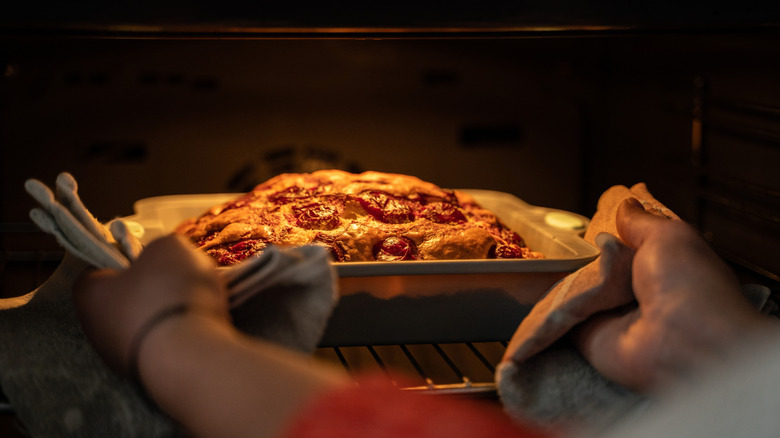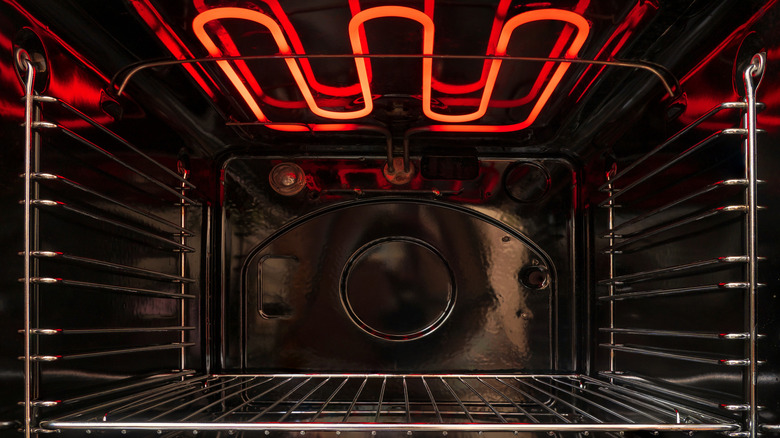What Is An Oven Hot Spot & How Does It Affect Cake Baking?
We may receive a commission on purchases made from links.
There are tons of mistakes that people can make when baking a cake, but one that you may not have heard of before is accidentally placing the confection near your oven's hot spots. Whether you're looking to make a light and airy Chantilly cake or a lemony olive oil cake, it's important to know where your oven's hot spots are so that you can plan your baking accordingly. To better understand this concept and avoid potential mishaps, Food Republic spoke to Odette D'Aniello, a baking expert and CEO at Dragonfly Cakes.
The expert explained that an oven hot spot is an area inside a standard oven (we aren't referring to convection ovens here) that gets hotter than other parts of the appliance. The most common areas for this to happen are in the periphery, meaning the sides and back of the oven. This is because these sections are closer to the metal parts, making them retain heat more than the center would. "It can lead to uneven rising, lopsided cakes, or one side browning too quickly while the other stays pale," D'Aniello said. "You might end up with a cake that's perfectly baked on one side and underdone on the other." Since hot spots can affect your cake's outcome, knowing which parts of your oven get the hottest will help you avoid these unwanted results.
How to identify and manage your oven's hot spots
Before you can manage your oven's hot spots, you need to know where the main ones are. To do so, Odette D'Aniello recommended conducting the sliced bread test: "Line a baking sheet with slices of white bread and bake at 350 [degrees Fahrenheit] for a few minutes," the expert recommended. After the few minutes are up, check the baking sheet and take note of which slices toasted the fastest — the areas that these slices were in indicate where your hot spots are. "Once you know where those are, rotate your pans halfway through baking to even things out," D'Aniello said. This trick is good for more than just cakes, too. You can rotate everything from bacon to roasted veggies and even pastries in the oven to ensure that heat is properly distributed throughout your dish.
If you want to go the extra mile, you can consider using pans known to help distribute heat properly. "You can also try using light-colored pans (they heat more evenly) or stacking an empty baking sheet underneath your cake pan for insulation," D'Aniello suggested. Baking sheets with a lighter hue, like this set from Deedro, tout uniform heating even when situated in those pesky hot spots.


